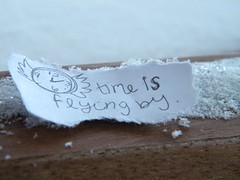For the last couple of years marketers have been chasing a dream. The great promise, the Holy Grail of social media, is user generated content – the marketing that is produced by the advocates of your brand. In a utopian world, this user generated marketing “goes viral” – registering millions of impressions/plays/hits on sites like YouTube or Facebook. But I am here to tell you this – we’ve been chasing our tails. We’ve been focusing on the wrong thing – and the iPad is going to prove it.
In social media, we struggle with the immutable 90-9-1 rule. Basically, we have found that when it comes to user participation, only 1% of our social group will CREATE content. Jakob Nielsen calls this participation inequality. Ben O’Connell and Jackie Huba evangelised these one percenters – the citizen marketer and changed the way that we thought about our audience. But even Wikipedia – the great user generated content success story of the Social Web – butts up against the 1% participation rate.
And yet, we constantly search for ways to overcome this barrier – to drive up participation. If we could double our productive audience, then imagine the power and the crowdsourced creativity! We could unleash Clay Shirky’s cognitive surplus. We could transform the world. Now, there are undoubtedly ways to improve participation (you can get significantly higher participation in internal enterprise transformation projects for example), but the real revolution is not in the creation of user generated content, but in its consumption.
One of the things that I have been interested in recently is the principle that EASE OF USE drives CONSUMPTION. I discussed some of my work in this area with Christina Kerley for a B2B case study (subscription required, but hey, it’s MarketingProfs and totally worth it). By removing the barriers to use – of your website, your product or service etc, you are actually able to quickly and demonstrably drive its use. Not only that, by changing the pattern of usage you are also changing the buyer behaviours associated with your brands and products, and this in turn changes the way that your brand or product is perceived.
And this is where the iPad comes in.
With almost zero functionality for content creators, Apple is turning its back on the the one percenters: the creative classes who have evangelised their products for years. The focus now is on CREATIVE CONSUMPTION, making the mass of user generated and branded content more easily accessible, more relevant and useful and bringing it to an audience who – in my opinion – have yet to openly adopt web technologies and the promise of the Social Web.
This will challenge agencies and brands alike. Some are responding already – like the work that BBH are doing with Cool Hunter and Cadillac. But this is just the beginning. The iPad app store is bound to explode in the same way that the iPhone app store did. Importantly, I expect this to open NEW markets – with non-computer users such as my parents and grandparents to finally begin participating in online markets.
But this is a whole new market. The focus is no longer on the early adopters – the one percenters – but on those who have NO INTEREST in content creation. Our ongoing focus will need to be on the NONE PERCENTERS – those new audiences attracted by the ease of use and social cachet attached to the iPad. Perhaps, for the first time, marketing attention will fall on the zeros – those who sit outside our 90-9-1 demographics – and I have a feeling they will prove far more valuable than the 100% who have dominated our lives more recently.
Are you and your brand ready to deal with the zeros?




